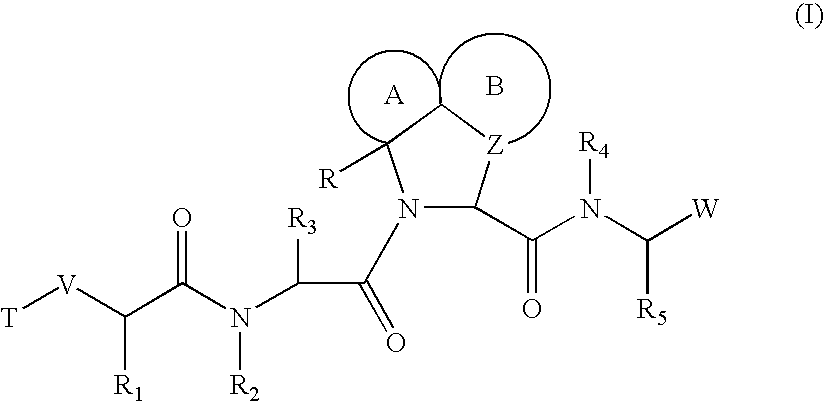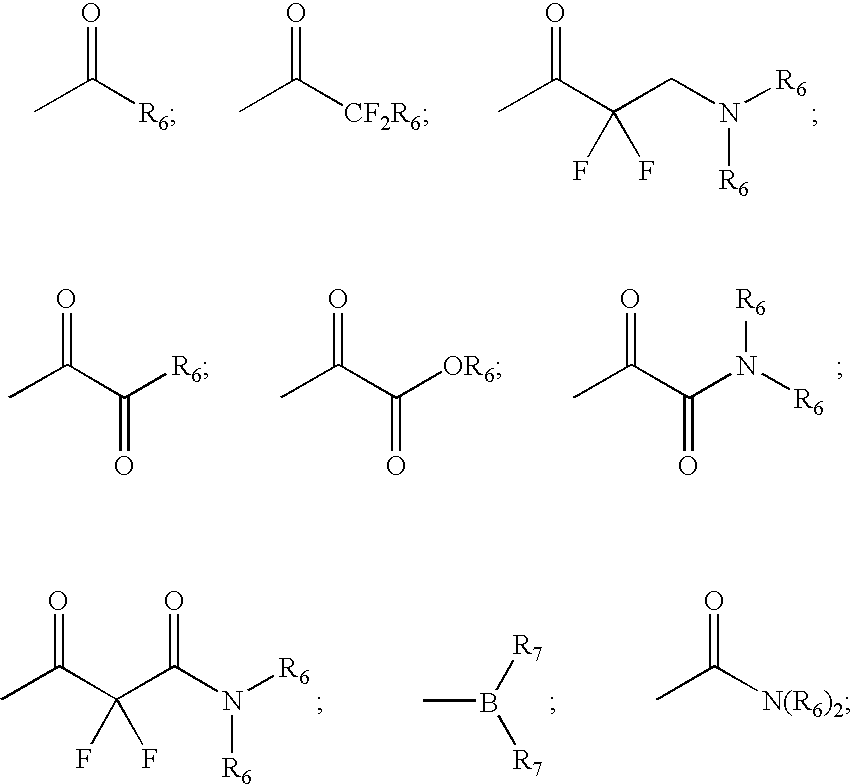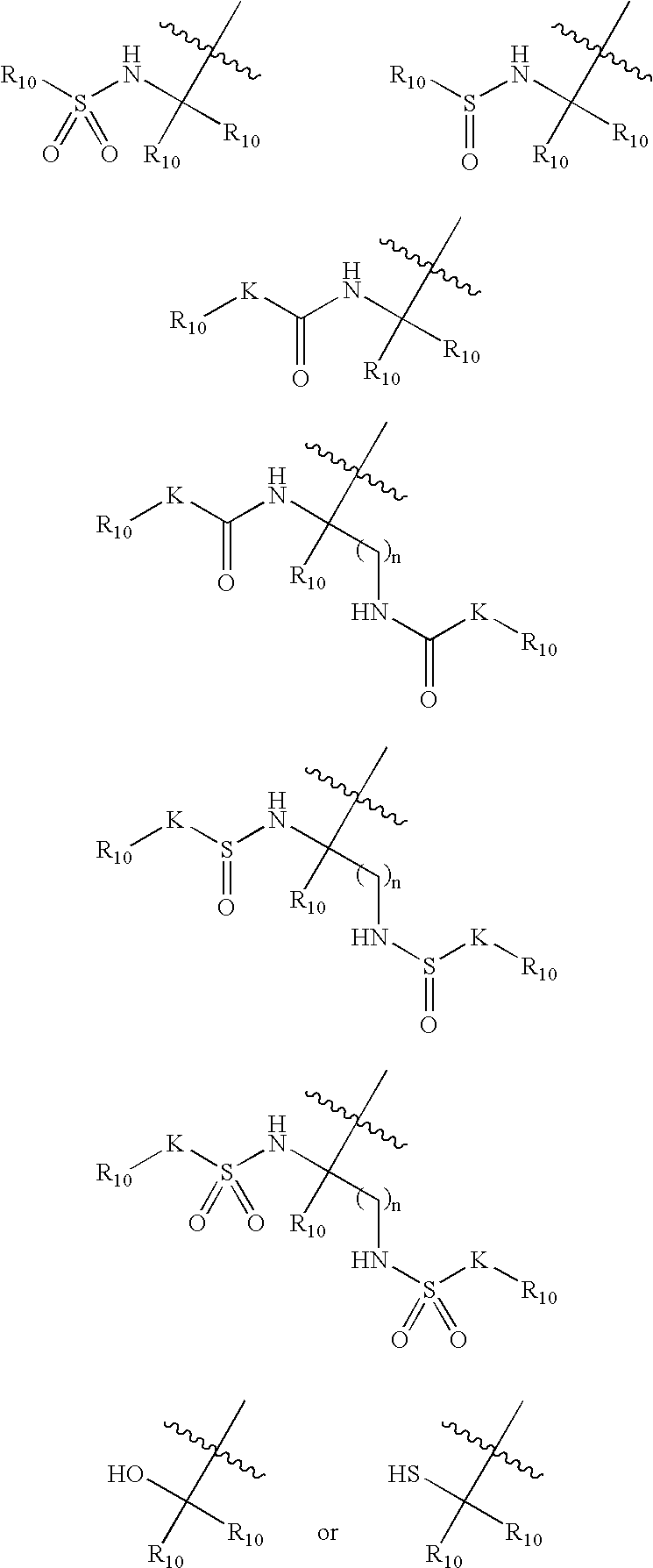Inhibitors of serine proteases, particularly HCV NS3-NS4A protease
a protease and serine protease technology, applied in the field of hcv ns3ns4a protease inhibitors, can solve the problems of no broad-based treatment for the debilitating progression of chronic hcv, no serine protease inhibitors available as anti-hcv agents, and current understanding of hcv has not led to any other satisfactory anti-hcv agents or treatments. , to achieve the effect of inhibi
- Summary
- Abstract
- Description
- Claims
- Application Information
AI Technical Summary
Benefits of technology
Problems solved by technology
Method used
Image
Examples
example 1
3-(tert-Butyl-dimethyl-silanyloxymethyl)-5-oxo-4-aza-tricyclo[5.2.1.02,6]dec-8-ene-4-carboxylic acid tert-butyl ester (28)
[0795] 2-(tert-Butyl-dimethyl-silanyloxymethyl)-5-oxo-2,5-dihydro-pyrrole-1-carboxylic acid tert-butyl ester (27) (4 g; 12.2 mmol) and freshly distilled cyclopentadiene (8 mL; 12 eq.) were heated in a sealed tube in toluene for 6 h at 110° C. Concentration and purification by flash chromatography (10% EtOAc / 90% hexanes) afforded 3.23 g (67%) of the desired product 28. 1H NMR (CDCl3) □ 6.1 (bs, 1H), 6.0 (bs, 1H), 3.8 (dd, 1H), 3.6 (d, 1H), 3.5 (s, 1H), 3.3 (s, 1H), 3.1 (dd, 1H), 2.9 (s, 1H), 2.6 (bs, 1H), 1.6 (d, 2H), 1.5 (s, 9H), 1.3 (d, 1H), 0.9 (s, 9H), 0.15 (s, 3H), 0.1 (s, 3H) ppm.
example 2
3-Hydroxymethyl-5-oxo-4-aza-tricyclo[5.2.1.02,6]dec-8-ene-4-carboxylic acid tert-butyl ester (29)
[0796] A solution of 28 (3.2 g; 8.1 mmol) in 60 mL of THF and acetic acid (1.16 mL; 20.3 mmol) was treated with TBAF 1M in THF. The reaction mixture was stirred for 16 h then was diluted with CH2Cl2 (120 mL) and washed with water (75 mL). The organic layer was dried with sodium sulfate and concentrated in vacuo to a yellow oil. Flash chromatography (60% EtOAc / 40% hexanes) afforded 1.81 g (81%) of the desired product 29. 1H NMR (CDCl3) δ 6.2 (bs, 1H), 6.1 (bs, 1H), 3.8 (d, 1H), 3.6 (m, 2H), 3.3 (s, 1H), 3.15 (dd, 1H), 3.1 (s, 1H), 2.5 (dd, 1H), 1.5 (app.t, 3H), 1.35 (s, 9H) ppm.
example 3
3-Hydroxymethyl-4-aza-tricycloc-4-carboxylic acid benzyl ester (32)
[0797] To a solution of 29 (1.81 g, 6.5 mmol) in 50 mL of dry ethyl acetate at 0° C. was bubbled dry HCl gas for 5 minutes. Stirring was continued while warming up to room temperature over a period of 10 minutes. Concentration to dryness afforded a solid residue that was subjected to lithium aluminium hydride reduction (2.5 equivalents) in refluxing THF for 2 h. Fieser work up afforded 1.07 g of the reduced product 31 that was used directly for the next step. A solution of 31 (1.07 g, 6.5 mmol) in 10 mL of dry THF was added to a vigorously stirred solution of potassium carbonate in 4 mL of water at −2° C. to 0° C. Cbz-Cl was added dropwise maintaining the temperature around 0° C. After the addition was completed (10 minutes), the reaction was further stirred for an additional 15 minutes at 0° C. and poured onto crushed ice and water (14 mL). Sodium chloride was added to saturate the aqueous phase. The organic phase ...
PUM
 Login to View More
Login to View More Abstract
Description
Claims
Application Information
 Login to View More
Login to View More - R&D
- Intellectual Property
- Life Sciences
- Materials
- Tech Scout
- Unparalleled Data Quality
- Higher Quality Content
- 60% Fewer Hallucinations
Browse by: Latest US Patents, China's latest patents, Technical Efficacy Thesaurus, Application Domain, Technology Topic, Popular Technical Reports.
© 2025 PatSnap. All rights reserved.Legal|Privacy policy|Modern Slavery Act Transparency Statement|Sitemap|About US| Contact US: help@patsnap.com



